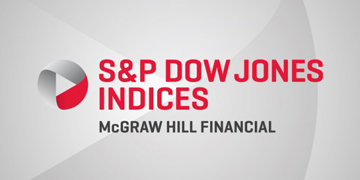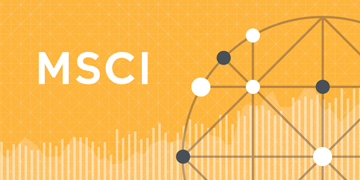Major Indexes on Capital Market
A market index is a value measurement of the capital market. It is a tool used by investors to describe the market and to compare the return on specific investments.
|
The Dow Jones Industrial Average (The Dow) is a stock market index. It is a price-weighted measure of 30 U.S. large companies that represent all industry sectors with excellent reputation and sustained growth, and is of interest to a large number of investors.
The Dow was first calculated on May 26, 1896 and is named after Charles Dow and Edward Jones. Although the Dow is compiled to gauge the performance of the industrial sector within the American economy, the index's performance continues to be influenced by not only corporate and economic reports, but also by domestic and foreign political events such as war and terrorism, as well as by natural disasters that could potentially lead to economic harm. The Dow is one of the best-known icons of American culture and among stock market observers around the world. The Dow along with the Dow Jones Transportation Average and the Dow Jones Utility Average were the world's first market indicators. Each of these three indices represents a select group of prominent U.S. companies. Together, they make up the Dow Jones Composite Average. |
|
U.S. Treasury securities are government debt instruments issued by the U.S. Department of the Treasury to finance the national debt of the United States. Treasury securities are often referred to simply as Treasuries. Since 2012 the management of government debt has been arranged by the Bureau of the Fiscal Service, succeeding the Bureau of the Public Debt.
The U.S. dollar interest rates paid on U.S. Treasury securities for various maturities are closely watched by many traders, and are commonly plotted on a graph which is often called "the yield curve". The shape of the yield curve can be used for making asset allocation decisions, because it is usually a reliable predictor of economic conditions. Yield curves have normal (steady growth), steep (inflationary), flat (stagnate) or inverted (recession) shapes. Bond investors should always keep an eye on the yield curve. The yield curve is also a great predictor of future economic activity and future levels of inflation, both of which directly affect the price of everything from stocks and real estate to household items. There are four main types (of marketable treasury securities: Treasury bills (1-year or less), Treasury notes (2-, 3-, 5-, 10-year), Treasury bonds (30-year), and Treasury Inflation Protected Securities (TIPS). All these four Treasury securities are very liquid and are heavily traded on the secondary market. Treasury bills function like zero-coupon bonds, which do not pay periodic interest payments. Investors buy bills at a discount from the par, or face value, and then receive the full amount when the bill matures. Treasury Notes and Bonds have interest paid semi-annually. |
|
The MSCI EAFE Index is a stock market index that is designed to measure the equity market performance of developed markets outside of the U.S. & Canada. It is maintained by MSCI Barra, a provider of investment decision support tools; the EAFE acronym stands for Europe, Australasia and Far East.
The index is market-capitalization weighted. The largest 70% will compose the MSCI EAFE Large Cap index, the largest 85% will compose the MSCI EAFE Standard. The 71st to 85th percentiles represent the MSCI EAFE Mid Cap, and the 85th to 99th percentiles represent the MSCI EAFE Small Cap. The index includes a selection of stocks from 21 developed markets, but excludes those from the U.S. and Canada. The index has been calculated since December 31, 1969, making it the oldest truly international stock index. It is probably the most common benchmark for foreign stock funds in the U.S. MSCI indexing offers a modern, seamless and fully integrated approach to measuring the full global equity opportunity set, with no gaps or overlaps. The MSCI Global Equity Indexes are used by institutional investors worldwide for investment analysis, performance measurement, asset allocation, hedging and the creation of a wide range of index derivatives, funds, ETFs and structured products. |
Other Notable Indexes on Capital Market
Other significant indexes on capital market include
The above indexes are often selected to form various portfolio benchmarks. If you believe that any other significant capital market indexes should be included here, please contact us.
- The Barclays U.S. Aggregate Bond Index covers the US$-denominated, investment-grade, fixed-rate, taxable bond market of SEC-registered securities. The index includes bonds from the Treasury, Government-Related, Corporate, Mortgage–Backed Securities (agency fixed-rate and hybrid ARM passthroughs), Asset-Backed Securities (ABS), and Commercial Mortgage–Backed Securities (CMBS). The index was formerly owned by Lehman Brothers until 2008. It was created in 1986, with index history back-filled to January 1, 1976.
- The Russell 2000 Index is a small-cap stock market index of the bottom 2,000 stocks in the Russell 3000 Index. The Russell 2000 is by far the most common benchmark for U.S. equity funds that identify themselves as "small-cap", while the S&P 500 index is used primarily for large capitalization stocks. It is the most widely quoted measure of the overall performance of the small-cap to mid-cap company shares. The index represents approximately 8% of the total market capitalization of the Russell 3000 Index.
- The MSCI ACWI Index (All Country World Index) is a market capitalization weighted index designed to provide a broad measure of equity market performance throughout the world. The index is comprised of stocks from both developed and emerging markets.
- The S&P GSCI Index is the first major commodity index. It is one of the most widely recognized benchmarks that is broad-based and production weighted to represent the global commodity market beta. The index includes the most liquid commodity futures, and provides diversification with low correlations to other asset classes.
- The World Government Bond Index (WGBI) measures the performance of fixed-rate, local currency, investment-grade sovereign bonds. The WGBI is a widely used benchmark that currently comprises sovereign debt from over 20 countries, denominated in a variety of currencies, and has more than 30 years of history available. The WGBI is a broad benchmark providing exposure to the global sovereign fixed income market.
The above indexes are often selected to form various portfolio benchmarks. If you believe that any other significant capital market indexes should be included here, please contact us.


